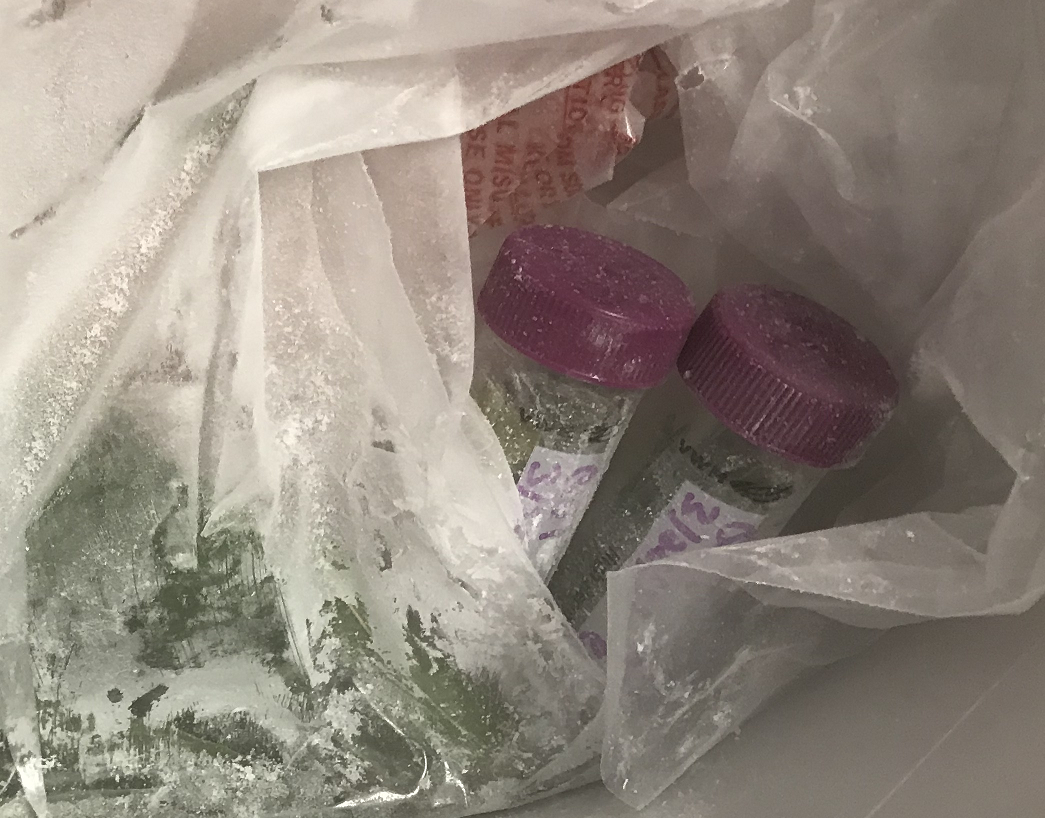Auburn Oak leaves enter the DNA sequencing pipeline
“Moments after leaves were collected from the Toomer’s Oak clone, they were plunged into liquid Nitrogen (-196 °C) to preserve their genetic material, then placed on dry ice (-80 °C) for transport to HudsonAlpha Institute for Biotechnology in Huntsville,” explained Leslie Goertzen, associate professor in the Department of Biological Sciences and director of the John D. Freeman Herbarium in the Auburn University Museum of Natural History in the College of Sciences and Mathematics. “The leaf tissue will be stored in ultra-cold freezers at the institute at a temperature of -80 °C. They will remain in this deeply frozen state until RNA and DNA extractions are performed in the Harkess Lab.”
This project, funded through Tiger Giving Day 2021, took its first steps in March, when leaves were collected and sent to Alex Harkess, an assistant professor in the College of Agriculture at Auburn and a faculty investigator at HudsonAlpha Institute for Biotechnology in Huntsville.
“Live oaks appear to be evergreen but actually drop their leaves in the spring when they put new ones out,” said Goertzen. “When the fresh, new leaves emerge, we will use them for high-quality DNA extractions, however, the old leaves represent an important developmental stage called senescence that we will also study.”
The DNA present in the leaves will provide scientists with the data to decode the complex genome of the Auburn Oaks.
“Alex and I will use the current, mature leaves on the tree for some preliminary DNA analyses, to gauge the genome size and estimate its heterozygosity -- the level of genetic difference between the chromosomes that the tree received from its mother versus its father,” Goertzen added.
Latest Headlines
-
06/17/2024
-
06/07/2024
-
05/31/2024
-
05/28/2024
-
05/28/2024


